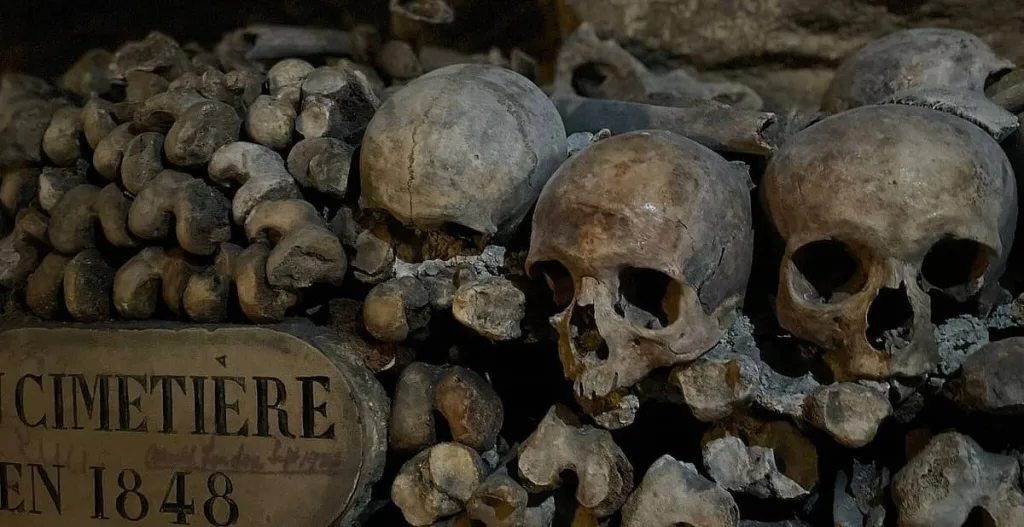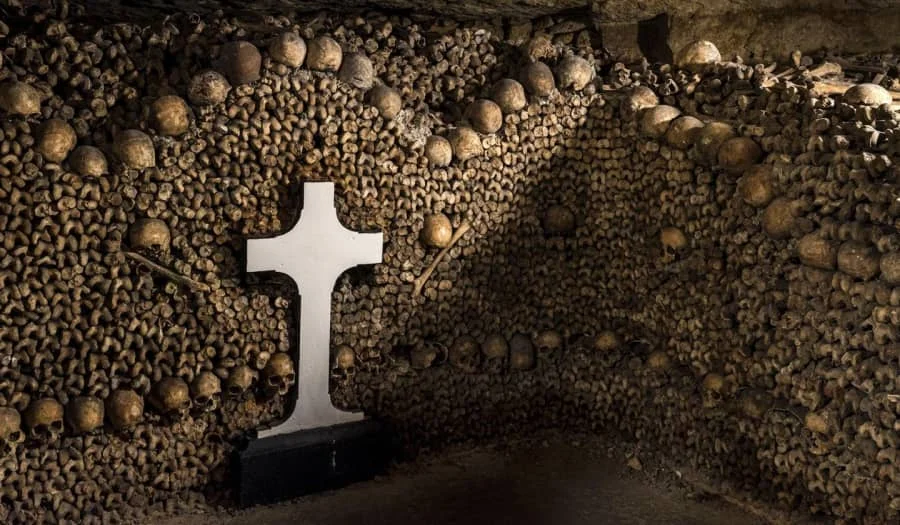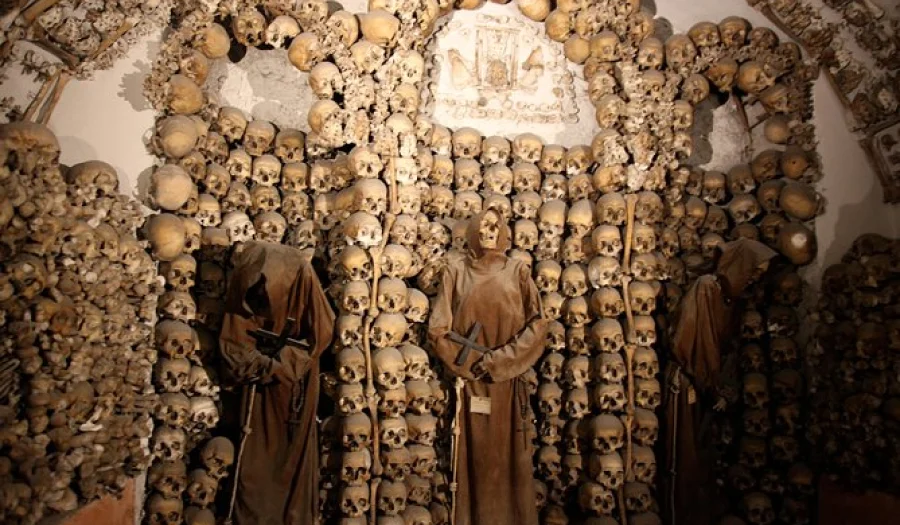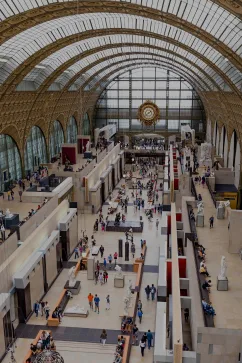Paris Catacombs

About Paris Catacombs
Did you know that twice as many corpses are buried under Paris as alive people in the city? Let’s see Paris from a “different point of view” by exploring the city’s slums. One of the most ironic facts about Paris is that it was constructed above the city’s dead in the underground catacombs. This vast underground ossuary holds the remains of approximately six million people, a huge network of tunnels extending for miles (kilometers) beneath the French capital city that once served as a solution to the overcrowded cemeteries in the 18th century. A Paris Catacombs tour takes you through dimly lit passages, revealing the neatly arranged bones and skulls, creating an eerie yet awe-inspiring ambiance.The catacombs delve into the history and mortality of Paris, showcasing its unconventional journey from burial grounds to a mesmerizing ossuary.
This tour provides a fascinating view of the city’s past as well as a sense of reflection on life and death. Wondering what are the catacombs of Paris? Visiting the Paris Catacombs will answer your doubt. Paris Catacombs tour allows you to delve into a lesser-known aspect of the city’s past, providing a thought-provoking experience that is both fascinating and unforgettable.
History of Paris Catacombs
The Paris Catacombs’ history traces back to the late 18th century when the city faced an overwhelming burial crisis due to overcrowded cemeteries. The Cimetière des Innocents, a prominent cemetery, symbolized the chaotic state of affairs, with graves piled high and bones jumbled together. Situated near the bustling Les Halles market, which was converted into a gigantic, confusingly set-out retail area.
Things had become much worse by 1780. Parisians who had been buried for decades or centuries were unearthed, and their bones were placed into carriers (mass graves) in the cemetery walls to make room. The Catacombs underground in Paris consists of many dead bodies, giving an astonishing view. Its unsanitary conditions led to complaints from residents and business owners.
City planners and authorities in Les Innocents had to become creative when faced with the challenge of transferring the remains of millions of people. To properly keep the remains of millions of Parisians, they settled on a huge network buried underground Paris on the left bank, most of which were located outside the city limits at the time. Today, the Paris Catacombs stand as a testament to the city’s innovative response to a complex challenge, as well as a unique place that captures the essence of Parisian history, mortality, and reflection.

Tips for your visit to the Catacombs
- Book in Advance: Reserve your Paris Catacombs tickets online to skip the lines and secure your spot.
- Underground Exploration: Delve into the fascinating underground world of the Catacombs of Paris, where history and mystery converge.
- Arrive Early: Opt for an early visit to avoid crowds and experience the catacombs’ ambiance more intimately.
- Guided Tours: Enhance your experience with a guided tour to gain insights into the catacombs’ history and significance.
- Dress Comfortably: Wear comfortable shoes and clothing suitable for walking in the underground passages.
- Photography: Capture the unique environment, but remember to be respectful in this solemn setting.
- Mind the Regulations: Follow the rules and guidelines set by the authorities to ensure everyone’s safety and preservation.
- Respectful Atmosphere: Keep in mind the catacombs’ role as a final resting place and maintain a respectful demeanor.
- Memorable Reflection: Embrace the experience as an opportunity for reflection on history, mortality, and the human connection to the past.
Tickets
Secure your Catacombs of Paris tickets conveniently online, bypassing queues and wait times. Purchase tickets through our website to streamline your visit. Adult tickets are €29, children aged 5-17 are €10, while kids under 5 enter free. Students, teachers, and individuals aged 18-26 enjoy a reduced rate of €23. Additionally, an online visit option is available for €5. Embrace a hassle-free experience while exploring this intriguing underground attraction.
How to arrive
Paris Catacombs Entrance location: 1 Avenue du Colonel Henri Rol-Tanguy, 75014 Paris, France.
Visiting the underground of Paris offers several routes, some below.
By Metro: The most convenient way is to use the Paris Metro. Take Line 4 and get off at the “Denfert-Rochereau” station. The entrance to the Catacombs is a short walk from the station.
By Train: The Paris Catacombs are accessible by Lines 4 and 6. From the Champ de Mars near the Eiffel Tower, you may get on RER B and get off at Denfert-Rochereau.
By Bus: You may get to the Catacombs from the surrounding area using any of the following bus lines: 38, 68, 88, or 91.
By Taxi: Taxis are readily available in Paris, whether you want to hail one on the street, go to a taxi stand, or use a taxi-hailing app.









